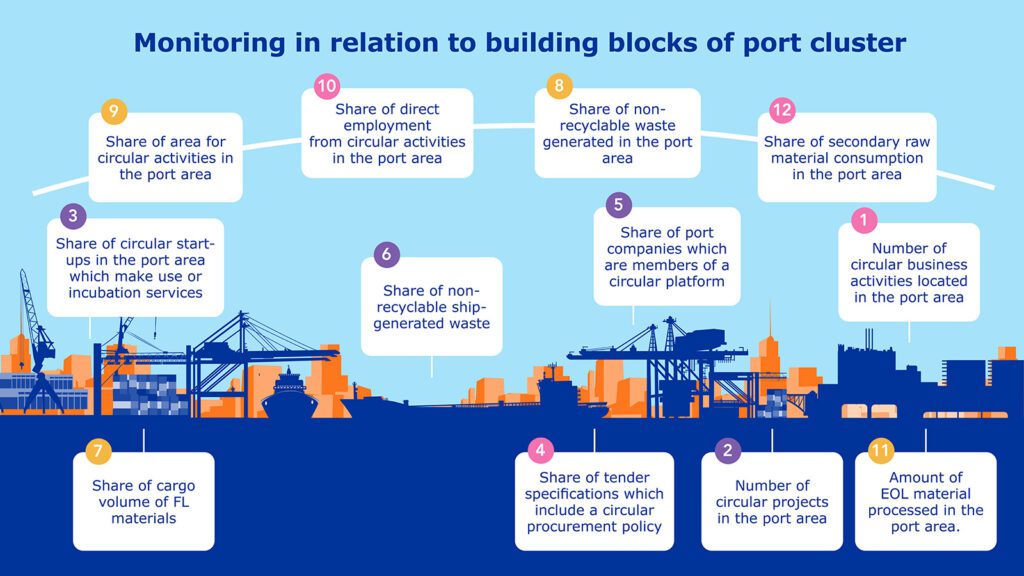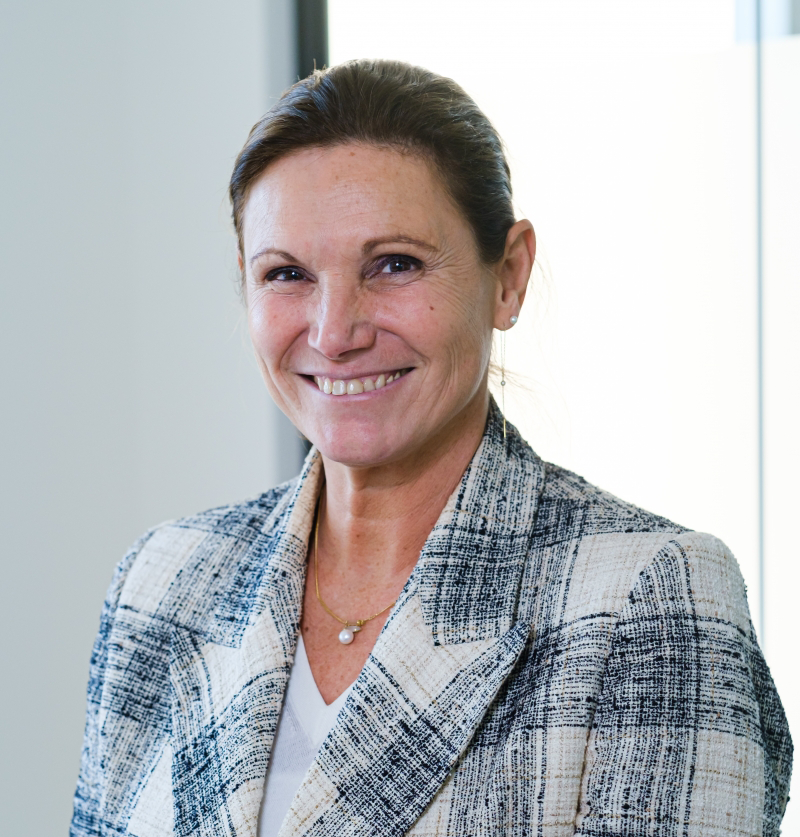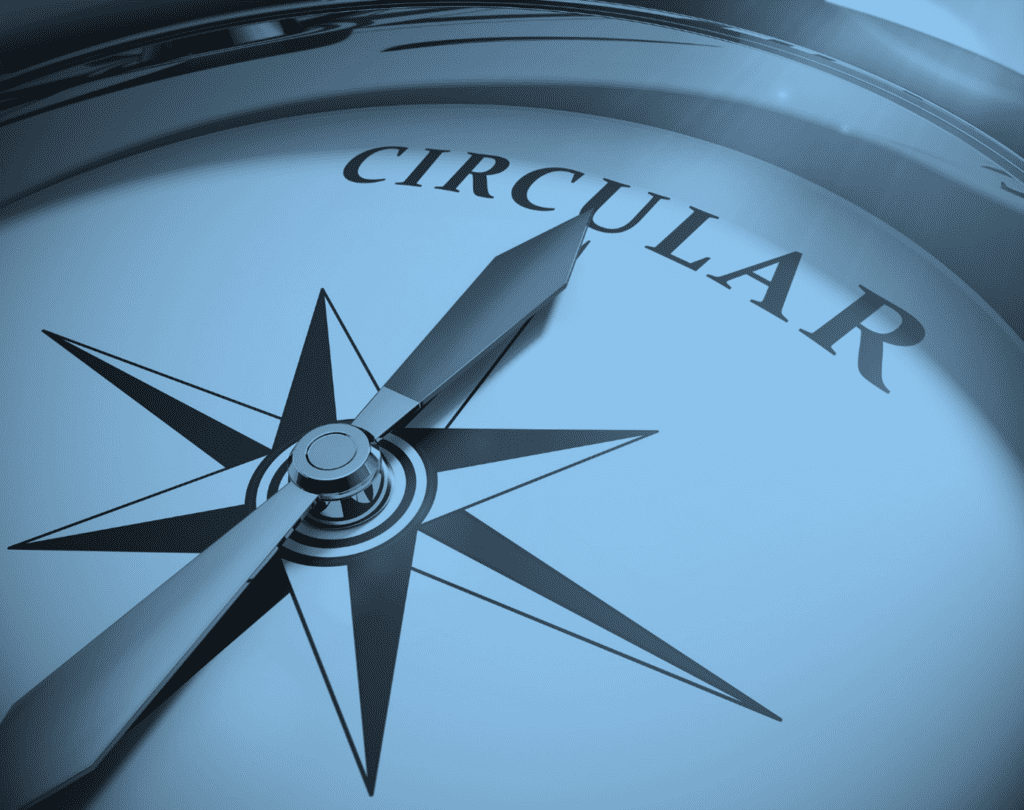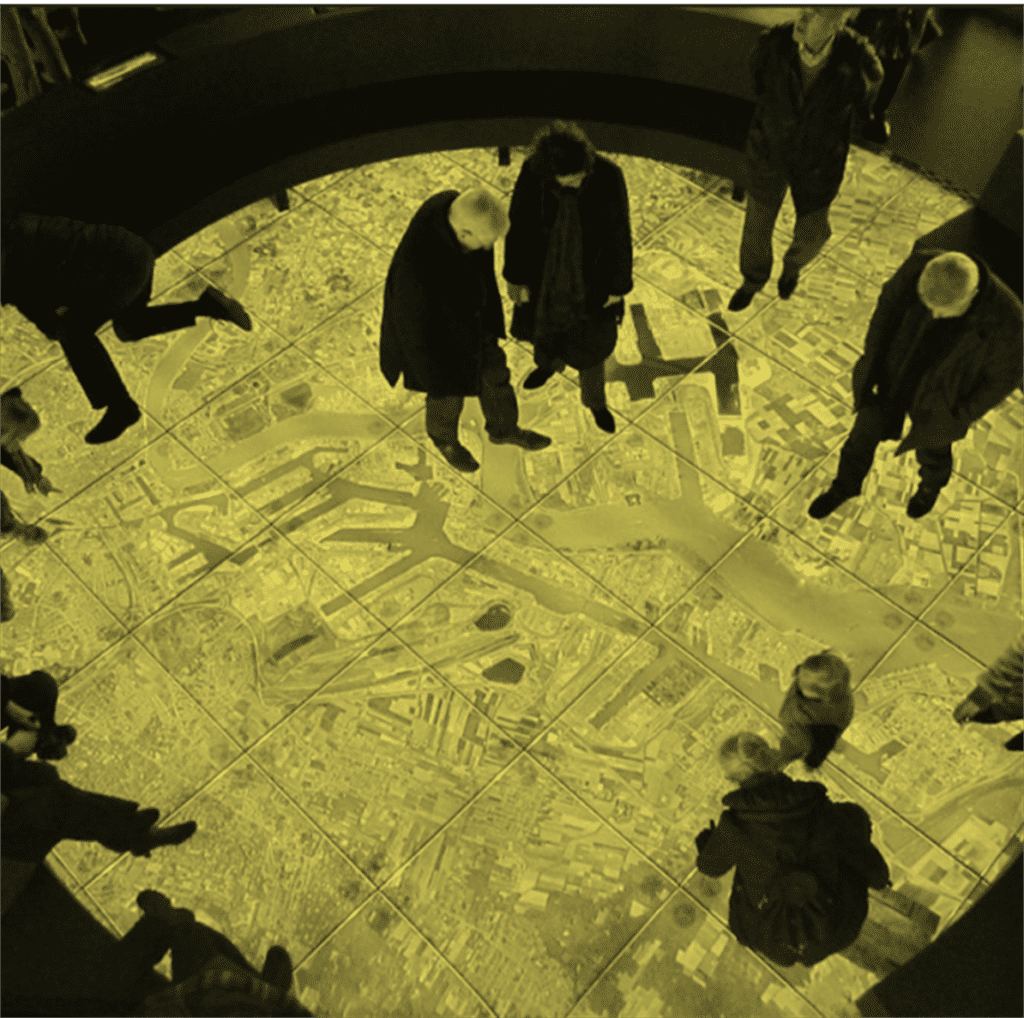Interview with Professor Elvira Haezendonck (VUB) on the Circular Port Monitor
Following the publication of the Circular Port Monitor – Explorative Research: Toward First Actionable Insights, we spoke with Professor Dr. Elvira Haezendonck (VUB, Social Sciences & Solvay Business School). She and her team are conducting research on monitoring the progress of the circular economy in our ports. This is an important step , because how are we to know that we are on the right track with the circular transition in ports, if we cannot measure it? “Ports and their companies are expected by society to take their environmental and economic impact to a higher level, but relatively little is known about what this impact really entails. Gradually, as a society, we want to see real data,” says Professor Haezendonck.
About half of our greenhouse gas emissions are related to materials produced and/or used in our economy. The circular economy offers an answer to this immense challenge of using raw materials much more efficiently. Ports play a crucial role in the development of a circular economy because they are the hubs par excellence for the import and export of materials. They also offer sites where materials are processed and stored, in industrial clusters, and by waste processing and logistics companies.
The Port of Antwerp Bruges, for example, expresses its strategic ambitions in terms of the circular economy like this: “We want to attract new players and stimulate existing industry in the port to make the transition to a circular economy. To this end, we are creating the necessary space, developing the necessary infrastructure and encouraging innovation.” In the port’s annual report however, there aren’t any concrete figures related to that ambition. So how are we to measure how circular the port economy really is, and what progress is being made? Having a good monitoring system in place for a circular economy in ports will be a prerequisite for answering that question.
Ports and their companies are expected by society to take their environmental and economic impact to a higher level, but relatively little is known about what this impact really entails. Gradually, as a society, we want to see real data
Shortlist: 12 Indicators
“Right now, we selected 12 indicators out of a longer list of potential indicators,” says Dra. Lynn Faut, who is on Professor Haezendonck’s team and doing her PhD on a potential Circular Port Monitor. “Twelve indicators may seem little, and some indicators look familiar, but the indicators we have retained allow ports to get started right away. In fact, we also immediately tested the feasibility. Once the ports calculate a baseline – something we can help them with – they can measure progress year after year. In fact, it is becoming quite urgent for ports to start working like this. By using a monitoring system, they gather useful data year after year and create transparency in how they translate their ambitions into actions and real impact.”

The energy crisis catches short-term attention
Today, the energy crisis is affecting everyone, including ports. During the Flemish-Dutch Port Day 2022 in Rotterdam, the subject dominated all discussions. Professor Haezendonck is not surprised. “The urgency of geopolitics and of the policy measures that are being taken now put the long-term vision and a more profound transition of the economic system somewhat in the shade. Obviously, the shift to different energy carriers has become urgent today. Businesses depend on energy: price, supply conditions and security of supply, etc. But once we have power on shore and sufficient renewable energy, then ports can shift their attention again to long-term goals.”
A more fundamental reform of our economy still awaits. “A circular economy is a fundamentally new economic system with new flows”, says Professor Haezendonck. “That is why it is so important for ports. Once the current energy crisis is over, the question remains: what are we going to produce? How are companies going to create added value in our region, for our prosperity? And how are these companies going to relate to these new value chains? The value chains must be stripped down completely and woven back together. This puts pressure on the revenue model of ports as well. Their customers are changing, so they also have to fundamentally rethink their role.”
Material Mines and the ‘License-to-Operate’
“Ports, in densely populated regions like ours, are the material mines of today and in the future,” argues Professor Elvira Haezendonck. “Ports have a license-to-operate for transshipment of goods and their processing. A lot of ports in our Flemish-Dutch Delta host a lot of industrial activity, and that is accepted. Opportunities to develop other large zones for industrial activity are largely exhausted. To collect and produce those secondary materials, you need hubs with a license-to-operate. Hence, ports, because of the space they still have, but also because of the parties they connect with in their value chain, are the preferred location to implement the circular economy now. They can become hotspots to tap various sources of secondary materials.”
“Ports are perfectly linked to the various parties and act as points of contact. They can bring parties together. A few years ago, people realized that port authorities, as a concept, has become outdated. Port authorities aren’t mere landlords but rather matchmakers and developers of ecosystems, so-called Port Management Bodies, and they are crucial in this transition. The good news is, they aspire to that role. So, we might as well make them responsible for it. That’s where we are at now. By starting to measure the impact, we will gain new insights.”

Material Mines and the ‘License-to-Operate’
“Ports, in densely populated regions like ours, are the material mines of today and in the future,” argues Professor Elvira Haezendonck. “Ports have a license-to-operate for transshipment of goods and their processing. A lot of ports in our Flemish-Dutch Delta host a lot of industrial activity, and that is accepted. Opportunities to develop other large zones for industrial activity are largely exhausted. To collect and produce those secondary materials, you need hubs with a license-to-operate. Hence, ports, because of the space they still have, but also because of the parties they connect with in their value chain, are the preferred location to implement the circular economy now. They can become hotspots to tap various sources of secondary materials.”
“Ports are perfectly linked to the various parties and act as points of contact. They can bring parties together. A few years ago, people realized that port authorities, as a concept, has become outdated. Port authorities aren’t mere landlords but rather matchmakers and developers of ecosystems, so-called Port Management Bodies, and they are crucial in this transition. The good news is, they aspire to that role. So, we might as well make them responsible for it. That’s where we are at now. By starting to measure the impact, we will gain new insights.”
Practical Problem: Reverse Logistics
A major problem for the business development of a circular economy in ports is reverse logistics. If all materials must be reused, then the logistical chains from users back to port must also be work smoothly. “Instead of materials from one big mine arriving at the port and organizing transshipment, society as a whole is now the mine,” Professor Haezendonck explains. “That involves fragmented, small volumes that have to be picked up at different locations. That’s quite complicated. Without the necessary critical mass, the cost increases significantly. Every company must therefore be willing to take steps toward more sustainable products and more sustainable production processes. At the same time, they will have to commit to fewer and better forms of consumption. That’s a gradual process.”
Raising Credibility and Ambition
What role can a Circular Port Monitor play in this? “First, the CE monitor will enhance the empowerment of ports and the credibility of their sustainable strategy. Without indicators, there isn’t really an objective base for making a circular transition,” Professor Haezendonck said.
“Secondly, the CE monitor is also an incentive to raise the level of ambition. Ports are making headlines with their sustainability policies. They shouldn’t think, for their own sake, that they are already on track to meet these long-term goals. Every port in one way or another thinks it is doing well, at the risk of becoming complacent. Ports have every interest in being leaders in such a transition of the economic system.”
Ports are making headlines with their sustainability policies. They shouldn’t think, for their own sake, that they are already on track to meet these long-term goals.
“The development towards circular ports does not stop at one single CE monitor. We expect new and better types of indicators in the future. The Port Management Bodies shouldn’t do everything by themselves either, but at least provide an incentive for it. With the concession policy, for example, a lot can already be done by attracting the right companies with the right circular mindset. Extra incentives can also be implemented by way of a bonus-malus system: companies in ports that perform well get a discount, where others who don’t do so well, are charged. This does not come out of the blue, as it is already applied in the context of container traffic. It can also be applied to circular activities.”
“The ports are communicating news that is still too anecdotal. A more mature system is now within reach by monitoring the circular transition and the impact on climate. These steps must be taken. If the largest ports take that step, other ports are likely to follow suit. As peers, they will want to benchmark themselves. We have explored the possibilities and proposed a workable method; now it is up to the Port Management Bodies to collect the data with the parties involved and put the first baseline calculation in place,” says Professor Haezendonck. “For the two largest ports in Flanders we hope to see a baseline for those first 12 indicators by 2025. This will be a real starting point. Not only will this allow us to work systematically, but we will also take the circular ambitions of ports to the next level.”



